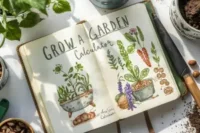How Seeds Are Formed: Step-by-Step Guide for Beginners
Published: 14 Oct 2025
How do plants make seeds that grow into new plants? Seed formation happens in steps, from pollination to fully grown seeds; each stage plays a key role in helping plants create new life. Understanding how seeds are formed sheds light on plant reproduction.
Sheila, with seven years of experience in botany, delves into this topic with clarity and expertise. This article will guide you through each seed formation stage, covering key processes like pollination, fertilization, seed dispersion, seed germination, and conclusion.
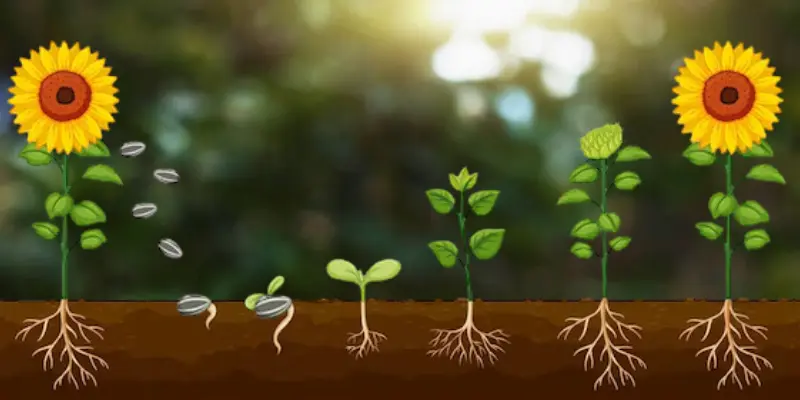
By the end of this article, you’ll have gained practical insights into the entire life cycle of a seed and its importance in nature. Let’s start this journey to discover the marvels of seed formation together!
How Seeds are Formed?
Understanding how seeds form is like uncovering the recipe for a new life, with each step carefully designed to create something unique. This process isn’t just biological; it’s nature’s way of ensuring survival across generations. Here are four main steps of the formation of seeds.
- Pollination
- Fertilization
- Formation of the zygote and endosperm
- Seed Development
Let’s explore each step of seed formation in an easy-to-follow way, from pollination to seed development.
Step 1 – Pollination
Pollination is the transfer of pollen from the male part of a flower to the female part, sparking the seed formation process. This crucial step is like an engine’s ignition, setting the entire journey into motion.
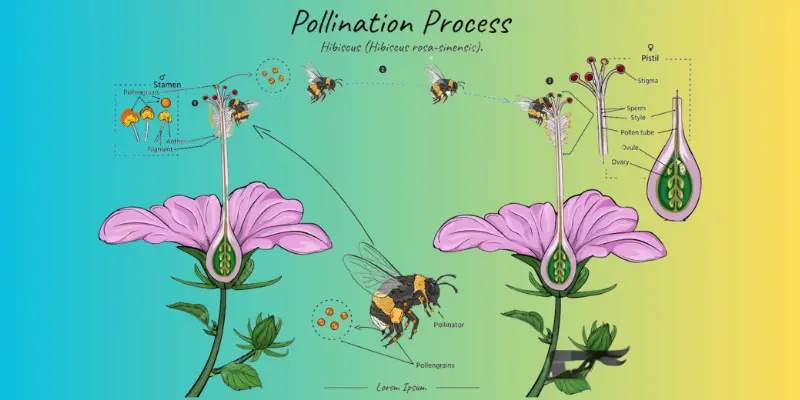
How Pollen Grains Reach the Stigma
- Pollen grains are carried by pollinators or wind and travel to the stigma, the entrance to the flower’s reproductive system.
Role of Pollinators (Wind, Water, Insects, Animals)
- Pollination doesn’t happen alone; agents like wind, water, insects, and animals play a vital role.
- These carriers spread pollen across distances, like a delivery service, ensuring that plants find compatible mates for seed formation.
Types of Pollination
Here are two main types of pollination
- Self-Pollination
- Cross-Pollination
Self-pollination
When pollen from a flower fertilizes another flower on the same plant, it ensures reproduction even if other plants are far away.
Cross-Pollination
When pollen from one plant reaches the flower of another plant, it encourages genetic diversity and stronger offspring.
Step 2 – Fertilization
Fertilization is the next step in the seed formation journey, like unlocking a door to create a new plant. After pollination, it’s time for the magic to happen inside the flower.
How the Male and Female Gametes Fuse 🧬
- Pollen reaches the ovule, where the male and female cells unite.
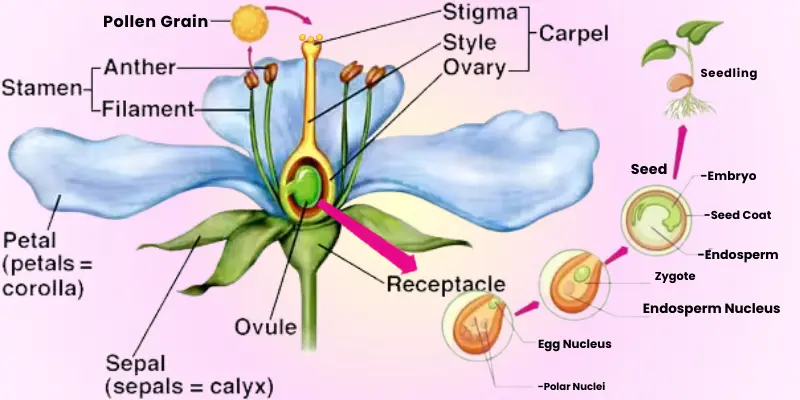
Double Fertilization (Exclusive to Flowering Plants)
- In flowering plants, there’s an extra step called double fertilization. While one sperm cell fuses with the egg, another joins with two other cells in the ovule to form the endosperm, which serves as the plant’s built-in food storage for the embryo.
- Think of it as a packed lunch, ready to fuel the new plant as it grows.
The Seed is Now Set
- With the zygote formed and the endosperm in place, the seed is officially on its way to becoming the next generation.
- It’s as if the plant’s future is locked in, just waiting for the right conditions to sprout.
Step 3- Formation of Zygote and Endosperm
Once fertilization occurs, the zygote and the endosperm form. These two components are key to the development of a healthy seed, each serving a unique role.
Zygote Formation
The zygote is the plant’s first step toward becoming a full-grown organism. It forms right after fertilization, laying the groundwork for all future growth.
- Zygote = Plant’s First Cell: The zygote holds the genetic code for the new plant.
- Blueprint for Growth: It gives rise to the plant embryo, ensuring everything develops correctly.
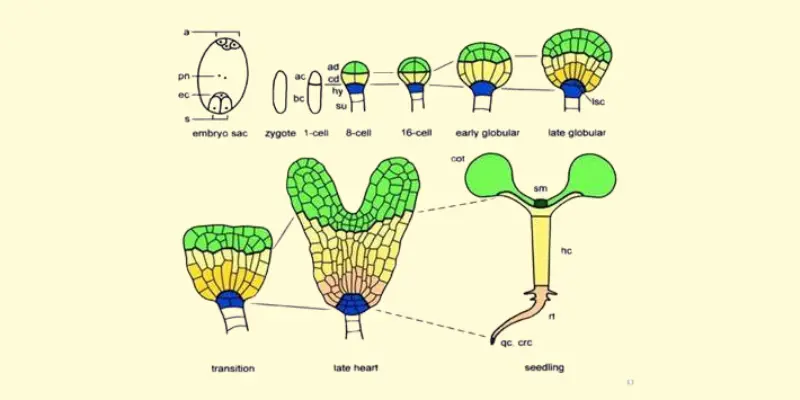
Endosperm Formation – The Plant’s Packed Lunch
The endosperm is like the plant’s food reserve, ensuring the young embryo has all the nutrients it needs to grow. This process happens right after the zygote is formed.
- Endosperm = Energy Source: It stores nutrients supporting the embryo as it grows.
- Nourishment for the Seedling: Just as a packed lunch sustains someone on the go, the endosperm provides the energy the young plant needs until it can produce its food through photosynthesis.
Step 4 – Seed Development
In this final stage, the embryo matures, and a protective coat forms around it, a crucial step that prepares the seed for the exciting germination process.
- Development of the Embryo Inside the Seed: The embryo grows, building the important parts of a new plant.
- Seed Coat Formation and Its Protective Function: Like a protective shell, the seed coat forms around the embryo to guard it from external damage.
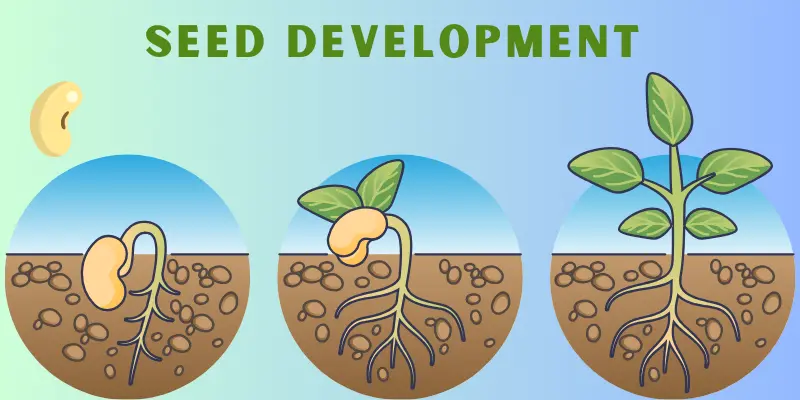
Each step in seed formation has a purpose, showing how plants use natural design to create the next generation.
Table: Parts of a developing seed and their functions
| Part | Function |
| Embryo | Becomes the future plant |
| Endosperm | Stores nutrients for growth |
| Seed Coat | Protects the developing embryo |
Types of Seeds Based on Formation
When it comes to seeds, they’re like little treasure chests holding everything a plant needs to grow. Based on their structure and formation, seeds can be grouped into two main categories:
- Monocotyledonous
- Dicotyledonous
Let’s explore what makes each type unique.
Monocotyledonous Seeds
Monocotyledonous seeds, or monocots, are the one-leaf wonders of the plant world. Think of them as the single-slice sandwiches in the seed realm. Plants like grasses and lilies, for example, fall into this category.
Structural Features
- Monocots have one cotyledon (seed leaf), their defining trait. The endosperm, a food reserve, stays intact and supports the seedling during early growth.
- Their embryos are simpler and streamlined, perfect for quick germination in grassland environments.
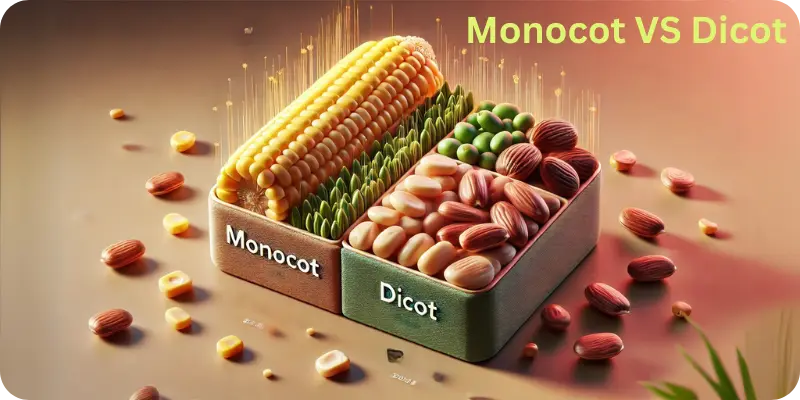
Dicotyledonous Seeds
Dicotyledonous seeds, or dicots, are the two-leaf specialists, imagine them as double-layered sandwiches packed with extra goodies! Plants like beans and sunflowers belong to this group.
Distinguishing Characteristics
- Dicots have two cotyledons, which often absorb the endosperm during seed development. It means the cotyledons act as food reserves, nourishing the plant until it can grow leaves and start photosynthesis.
- Their embryos are more complex, reflecting their ability to thrive in different environments.
Seeds are nature’s masterpieces, each carrying a unique blueprint for life. Whether planting a sunflower or sowing grass, understanding the differences between these seed types can make your gardening journey even more rewarding!
The Role of Environmental Factors in Seed Formation
Environmental factors like temperature, water, light, and nutrients are crucial in forming healthy seeds, much like a chef needs the right ingredients for a perfect recipe. Each factor supports the seed’s journey from pollination to maturity, affecting every stage of its growth.
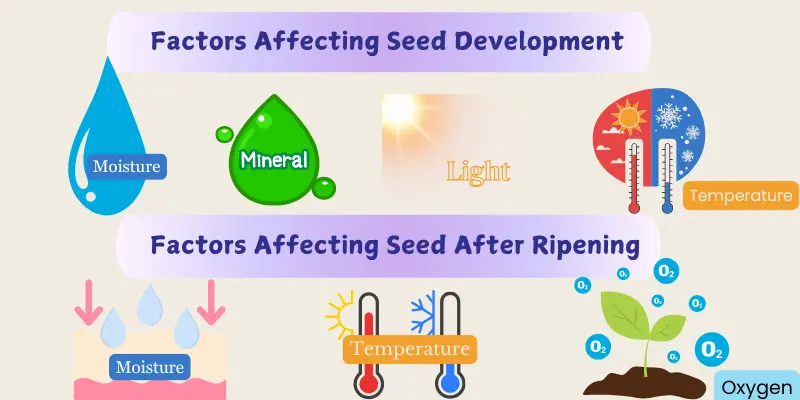
| Factors | Role in Seed Formation | Impact on Seed Development |
| Temperature | It provides the right warmth for seeds to grow. | Extreme temperatures delay or prevent growth. |
| Water | Activates seed growth by aiding nutrient absorption. | Consistent moisture crucial for germination. |
| Light | Acts as a signal for seed germination and growth direction. | Signals germination; some seeds need sunlight. |
| Nutrient Availability | Supplies essential energy and materials for seed strength and structure. | Essential for strong, healthy seed development. |
How These Factors Affect Pollination and Seed Development
- Pollination Timing: Extreme weather, such as excessive heat or rain, can disrupt pollination, which affects how well seeds develop.
- Seed Strength and Growth: Seeds receiving adequate sunlight, water, and nutrients develop stronger roots and shoots, ensuring survival in various environments.
Importance of Optimal Conditions for Seed Maturity
- Seeds that grow in optimal conditions develop fully, with more robust structures and nutrient reserves.
- Mature seeds have a better chance of sprouting into healthy plants, continuing the life cycle, and sustaining plant populations.
| Interesting Facts |
|---|
|
Seed Formation in Everyday Life and Agriculture
Seed formation underpins ecosystems and agriculture, similar to a strong foundation for a building. It enables diverse plant growth, critical for food systems and the natural world. Let’s delve into the importance of seeds in agriculture and human support.
Importance of Seeds in Agriculture and Food
- Staple crop seeds like rice, wheat, and corn form the backbone of global diets, yielding essential calories and nutrients and ensuring daily nutrition and food security for billions.
- Seeds are economically valuable, producing oils and spices that support trade and livelihoods. Essential to various industries, they boost economies worldwide through products like sunflower oil and mustard for flavor.
How Humans Support Seed Formation and Growth
- People increase seed production through beekeeping and artificial pollination, giving the process a helpful boost. These methods create higher crop yields and healthier plant growth, ensuring a stable food supply.
- Adequate soil and water management promote strong seed growth. Crop rotation and irrigation improve soil fertility and moisture, supporting healthy plant growth and higher yields.
The journey from seed to plant is one of nature’s finest engineering feats, a process perfected over millennia.🌱✨🛠️🌿 James F. Hancock (Author of Plant Evolution and the Origin of Crop Species)
Conclusion
Seed formation is a fantastic journey, starting with pollination and leading to the sprouting of a new plant. In how seeds are formed, we break down each step, from pollen landing on the stigma to seeds growing into vigorous, healthy plants.
This journey is crucial for nature and agriculture, helping produce the food we rely on everyday. Are you Interested in learning more about how plants grow?
Keep reading to explore the wonders of seed formation!
FAQs About Seed Formation
You can read below discussed frequently asked questions for more information:
Seed formation is the process through which plants reproduce by creating seeds. It ensures the survival of plant species and supports ecosystems and agriculture by providing the foundation for plant growth.
Pollination transfers pollen from the male to the female parts of a flower, initiating seed formation. It is essential for fertilization, which leads to seed development.
Fertilization involves the union of male and female gametes, forming a zygote and endosperm. This step is crucial as it sets the stage for the seed’s growth and nourishment.
Monocot seeds have one cotyledon and are more straightforward, like grasses, while dicot seeds have two cotyledons, which act as food reserves, as seen in beans and sunflowers.
Environmental factors like temperature, water, light, and nutrients play vital roles in seed formation, ensuring proper pollination, development, and germination.
Double fertilization occurs when one sperm fertilizes the egg to form the zygote, and another combines with two cells to create the endosperm. This process provides nourishment for the growing embryo.
Seed formation is essential for producing staple crops like wheat, rice, and corn, which sustain global diets and economies. Farmers support this process through methods like artificial pollination and soil management.

- Be Respectful
- Stay Relevant
- Stay Positive
- True Feedback
- Encourage Discussion
- Avoid Spamming
- No Fake News
- Don't Copy-Paste
- No Personal Attacks

- Be Respectful
- Stay Relevant
- Stay Positive
- True Feedback
- Encourage Discussion
- Avoid Spamming
- No Fake News
- Don't Copy-Paste
- No Personal Attacks



